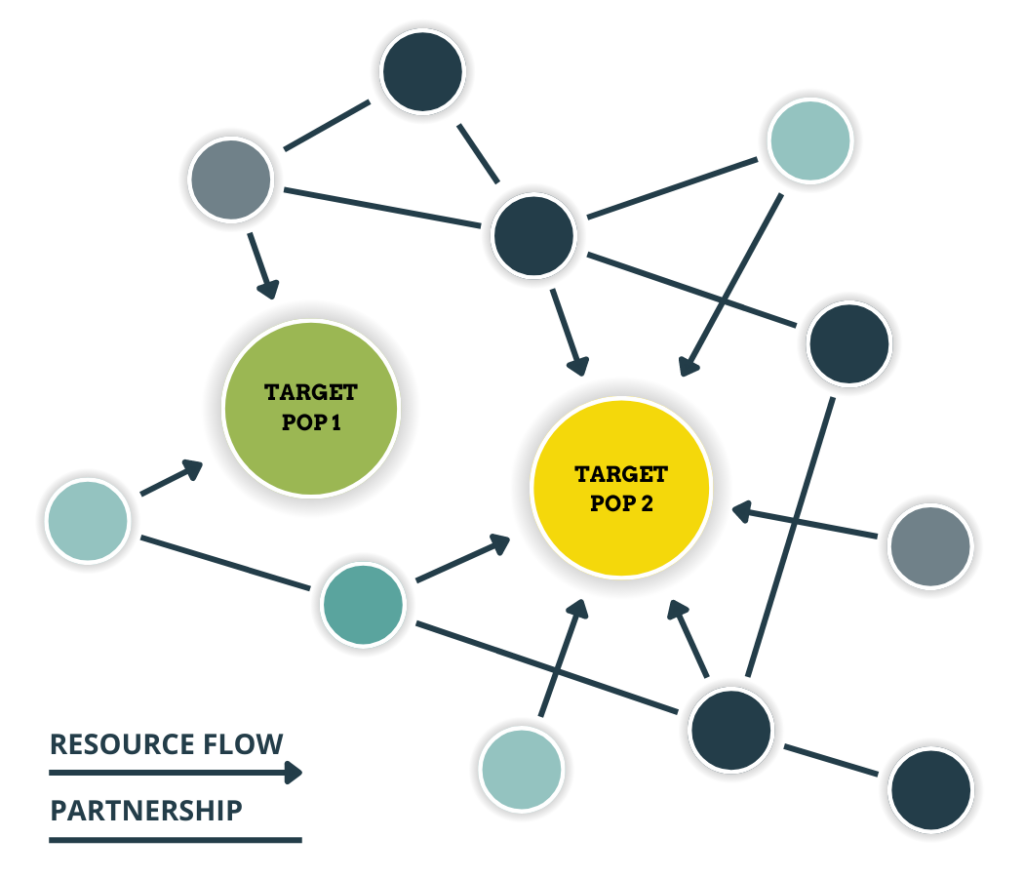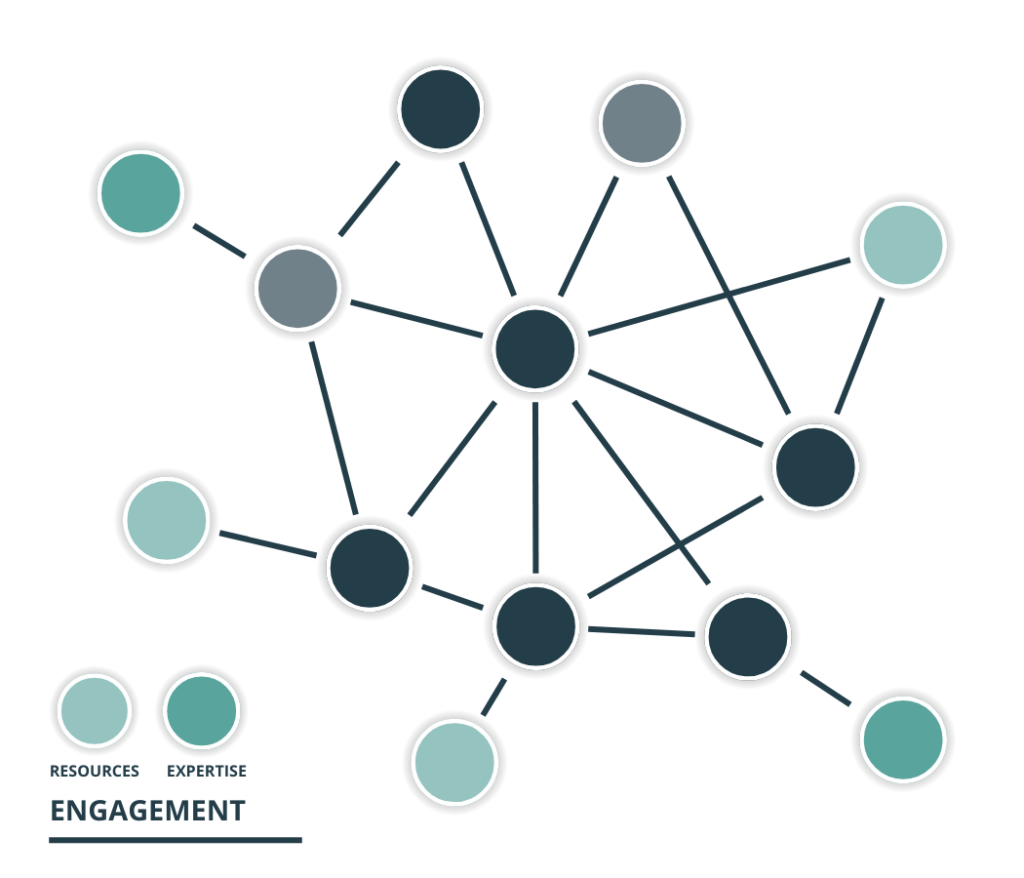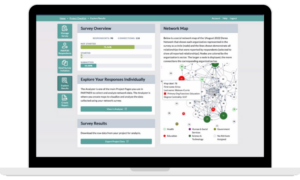Collaboration lies at the heart of effective public health initiatives. By bringing together diverse organizations and stakeholders, we can tackle complex health challenges more efficiently and achieve better outcomes for communities. However, managing and evaluating these collaborative efforts has been a longstanding challenge in the field. That’s where Strategic Collaborative Management (SCM) comes into play. In this blog, we will explore what SCM is, its value in the public health sector, how it works in practice, and introduce PARTNER CPRM (Community Partner Relationship Management), a powerful platform for mapping and tracking your network of community partners.
Table of Contents
Understanding Strategic Collaborative Management
Strategic Collaborative Management (SCM) is a comprehensive approach to managing and evaluating collaborative initiatives in the public health sector. It involves systematic analysis of networks, relationships, and resources within a collaborative effort to optimize its effectiveness. SCM goes beyond traditional measures of collaboration, such as counting the number of partners involved, by examining the quality of relationships, resource contributions, and the overall network structure.
The Value of Strategic Collaborative Management
SCM brings several key benefits to public health collaborations. Firstly, it provides a framework for assessing the context and nature of relationships among partner organizations. By understanding how these relationships evolve and the conditions under which they are formed, collaborative efforts can be strategically enhanced. Secondly, SCM allows for the identification of redundant connections within the network, enabling more efficient resource allocation and better utilization of limited resources. Additionally, SCM helps build trust among partners, fosters leadership development, and promotes collective decision-making, ultimately leading to improved collaboration and better health outcomes.

Get our monthly newsletter with resources for cross-sector collaboration, VNL recommended reading, and upcoming opportunities for engaged in the “network way of working.”
Implementing Strategic Collaborative Management
To implement SCM, public health departments and collaborative initiatives can utilize tools and methods that capture network data. One such tool is the PARTNER CPRM platform, which provides a comprehensive solution for mapping, tracking, and evaluating community partner networks. By using PARTNER CPRM, organizations can visualize their network connections, assess the quality and strength of relationships, and identify opportunities for leveraging resources and improving collaboration.
PARTNER CPRM: Map and Track Community Partner Networks
PARTNER CPRM (Community Partner Relationship Management) is the current iteration of PARTNER, a robust platform designed specifically for public health collaborations. It enables organizations to create visual representations of their community partner networks, displaying the connections, resource contributions, and levels of trust among partners. With PARTNER CPRM, public health departments can gain valuable insights into their collaborative efforts and make data-driven decisions to enhance their performance.

Leveraging PARTNER CPRM for Strategic Decision-making
PARTNER CPRM empowers organizations to strategically manage their collaborative initiatives. By analyzing the network data generated by the platform, public health departments can identify potential partners to engage, leverage existing resources more effectively, reduce redundancy, and enhance the overall efficiency of their collaborations. Furthermore, PARTNER CPRM facilitates the establishment of trust, fosters inclusive decision-making processes, and supports leadership development within the network.
SCM Examples From the Field:
Enhancing Resource Utilization Among Partners

Armed with these insights, the public health department made data-driven decisions. They initiated a series of strategic conversations with their partners to explore opportunities for resource reallocation and increased collaboration. Through facilitated discussions, they identified areas where organizations could specialize and complement each other’s services, reducing duplication and maximizing the impact of their collective efforts. As a result, the collaborative was able to allocate resources more efficiently, reaching a broader range of individuals in need.
Strengthening Partnerships and Decision-making Processes

With this knowledge in hand, the coalition initiated targeted outreach efforts to connect with the underrepresented organizations. They organized networking events, workshops, and information sessions to foster new partnerships and engage previously untapped resources. Through these intentional relationship-building efforts, the coalition created a more inclusive and diverse network, ensuring a broader range of perspectives and expertise in their decision-making processes. The result was improved collaboration, increased trust among partners, and a more comprehensive approach to addressing community health issues.
Unlocking the Potential of Strategic Collaborative Management
The integration of Strategic Collaborative Management, facilitated by tools like PARTNER CPRM, opens new avenues for public health collaborations. By utilizing data-driven insights and strategic decision-making, organizations can maximize the impact of their collaborative efforts, improve community health outcomes, and establish a foundation for long-term success.

Get our monthly newsletter with resources for cross-sector collaboration, VNL recommended reading, and upcoming opportunities for engaged in the “network way of working.”
Apply Strategic Collaborative Management in Your Network
As the importance of collaboration in public health continues to grow, it is crucial to adopt effective management and evaluation practices. Strategic Collaborative Management (SCM) provides a systematic approach to optimizing collaborative initiatives, leveraging resources, and fostering strong relationships among partners. With the introduction of PARTNER CPRM, organizations now have a powerful platform to map, track, and evaluate their community partner networks. By embracing SCM and utilizing tools like PARTNER CPRM, public health departments can drive meaningful change, enhance collaboration, and ultimately improve the well-being of communities.
Additional Reading and Resources
Here are some additional articles, websites, and resources with information about PARTNER CPRM and strategic collaborative management in public health practice.
- Research Article: Data-Driven Management Strategies in Public Health Collaboratives
- Blog Article: What Is A Network Strategy?
- Infographic: Using Network Data to Inform Collaborative Strategy
- Case Study: Building a Network Strategy to Improve Early Childhood Outcomes
- Project: Evaluating the Rock County Public Health Network of Community Partners
Learn More: Request a Demo!

Our experts will guide you through its tailored features, ensuring you harness the full potential of your collaborative network. Your journey towards a more strategic, connected community network starts here.
Frequently Asked Questions
Here are some additional questions related to strategic collaborative management with PARTNER CPRM. If you have a question we haven’t addressed, leave a comment below, and we will get back to you with an answer as soon as possible.
A: SCM and PARTNER CPRM are valuable tools for a wide range of organizations in the public health sector, including public health departments, community health coalitions, nonprofit organizations, healthcare providers, government agencies, and community-based organizations. Any collaborative effort aimed at addressing public health challenges can benefit from implementing SCM and utilizing PARTNER CPRM.
A: PARTNER CPRM offers a user-friendly platform that allows organizations to create visual representations of their community partner networks. It helps users map out their connections, visualize the strength of relationships, identify key partners, and assess resource contributions. With the data visualization capabilities of PARTNER CPRM, organizations can gain a comprehensive understanding of their network dynamics and make informed decisions to optimize collaboration.
A: Absolutely! SCM, coupled with PARTNER CPRM, enables organizations to assess resource utilization within their collaborative efforts. By analyzing network data, identifying redundancies, and visualizing resource allocations, organizations can make data-driven decisions to optimize resource utilization, reduce duplication of services, and allocate resources more effectively. This leads to improved efficiency and better outcomes for the collaborative.
A: SCM emphasizes the importance of trust in collaborative efforts, and PARTNER CPRM plays a significant role in fostering trust among partners. By visualizing the levels of trust within the network and facilitating open, transparent discussions, organizations can address trust-building as a strategic goal. The platform enables organizations to identify potential gaps in trust, initiate dialogue to resolve any concerns and promote a culture of mutual respect and collaboration, ultimately strengthening partnerships within the network.
A: SCM is an ongoing practice that evolves as the collaborative effort progresses. It begins with the initial network assessment, relationship dynamics, and resource contributions. However, as the collaboration develops, new partners may join, relationships may change, and priorities may shift. Therefore, continuous monitoring, evaluation, and strategic decision-making are necessary to adapt to these changes and ensure the ongoing effectiveness of the collaborative effort.






